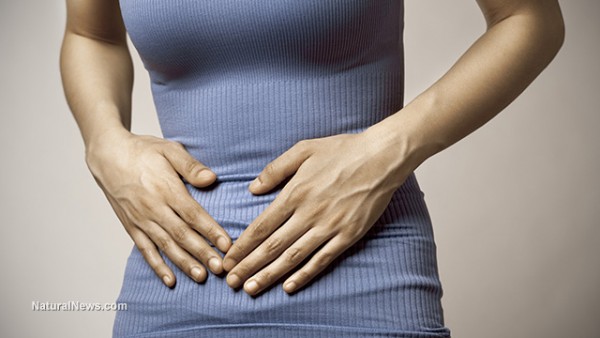Is it UTI or something worse? How to determine the causes of lower abdominal pain
02/05/2020 / By Zoey Sky

Pain in the lower abdomen can be caused by a bacterial, parasitic or viral infection. The pain can also be due to a UTI (urinary tract infection), but it is best to check your symptoms and what caused the condition to determine the most effective natural remedy for the pain that you are experiencing.
Lower abdominal pain, or pain localized in the area just below your belly button, can go away on its own if it is caused by common conditions such as constipation, diarrhea, stress-related pain or stomach flu.
But if your abdominal pain is recurring or doesn’t go away after a couple of days, you might need to consult a natural health practitioner. The problem may be linked to conditions that affect vital organs in your abdomen like your appendix, gall bladder, intestines, kidneys, liver, pancreas, spleen or stomach.
If you experience excruciating lower abdominal pain, pass bloody urine or start vomiting blood, seek medical attention immediately.
UTI symptoms to watch out for
A UTI often causes lower abdominal pain, bowel issues and problems with a woman’s reproductive system. UTIs have classic symptoms, non-classic symptoms and symptoms specific for male and female patients. (Related: TCM found to effectively treat recurring urinary tract infections.)
Symptoms that affect both genders include:
- Frequent need to urinate, but with reduced urine output.
- Burning sensations while urinating.
- Discolored urine (White, cloudy, pink, red or dark.)
- Incontinence.
- Pain in the pelvic area.
- Lethargy.
- Urinary retention.
- Urine with a strong odor.
Men with UTIs may experience pain between the rectum and scrotum, along with dribbling, leakage or a slow stream when urinating.
Other causes of lower abdominal pain
Pain in the lower abdomen may occur because of an infection or inflammation.
Pain that is localized may be caused by a problem with a specific organ. Meanwhile, more widespread pain may have vague symptoms.
Below are the other possible causes of lower abdominal pain.
- Genital herpes causes pain in the abdomen or genital area before you experience other symptoms. An outbreak may cause blisters that ooze fluid and eventually scab over. There is no cure for genital herpes and medication only treats outbreaks.
- Kidney stones are painful, particularly as your body tries to eliminate them through your urinary tract. Symptoms include pain while urinating, discolored urine (because of infection) and a fever.
- Pelvic inflammatory disease (PID) is the infection of the female reproductive tract. PID is often caused by a sexually transmitted infection (e.g., chlamydia or gonorrhea). Symptoms include lower abdominal pain, irregular periods, foul-smelling vaginal discharge and pain during intercourse.
- Urethral stricture occurs when the opening of the urethra is narrowed and restricts the flow of urine. Urethral stricture is caused by inflammation or scar tissue from an injury, surgery or a catheter.
Other issues that cause lower abdominal pain include appendicitis, ectopic pregnancy, endometriosis, fibroids, a hernia, intestinal obstruction or ovarian cysts.
Determining the cause of lower abdominal pain
A physician can run tests to determine what infection or condition is causing lower abdominal pain. If you have a UTI, testing will include palpating the abdomen to determine the source of pain and swelling. A urinalysis will determine which bacteria are present.
Other conditions require further testing. Blood, urine or stool samples can determine if your problem is bacterial, parasitic or viral in nature.
Preventing UTIs
Here are several ways to prevent a UTI:
- Avoid perfumed products like douches, powders or sprays.
- Stay hydrated. Drinking lots of water promotes regular urination that can help flush bacteria from your urinary tract. This then prevents infection.
- Practice proper hygiene. Keep the area clean and dry. Uncircumcised males must clean under the foreskin daily.
- Empty the bladder often and totally to prevent bacteria buildup and infections.
- When you use the toilet, wipe front to back. Wiping from back to front can cause bacteria to spread to your urinary tract.
- Take a shower instead of a bath.
- Urinate immediately after sex to prevent the spread of bacteria.
- Use condoms during intercourse.
Stay hydrated and empty your bladder regularly to prevent UTIs. If you experience excruciating pain and your symptoms aren’t due to a UTI, consult a physician immediately.
Sources include:
Tagged Under: bacterial infection, home remedies, infections, inflammation, lower abdominal pain, men's health, natural cures, pain relief, remedies, Urinary Tract Infection, UTI, women's health
RECENT NEWS & ARTICLES
COPYRIGHT © 2017 PREVENTION NEWS




















